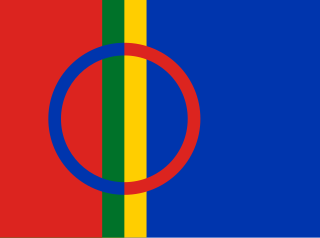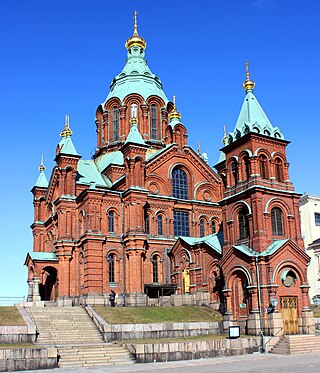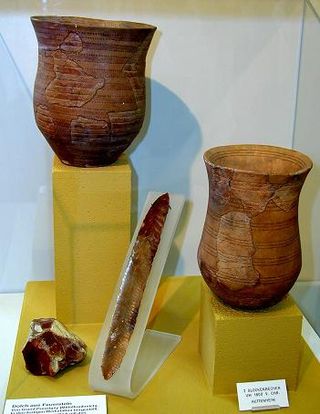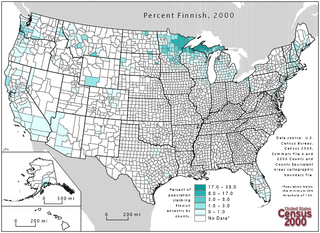The Swedish Finn Historical Society is a genealogical association in Seattle, Washington, US.
Persons sharing an interest in Swedish-Finn culture, tradition, and history founded the Swedish-Finn Historical Society in 1991.
Their mission statement: "To gather and preserve the emigration history of Swedish Finns across the world; connect Swedish Finns to their roots in Finland; and celebrate our cultural heritage."
The society maintains an archive and a library containing material pertaining to Swedish Finn culture, history, and tradition and makes this material available for interpretive, educational and research purposes. The society publishes a periodical, the Quarterly, and maintains a website. The Society provides genealogical information to members. The society arranges and participates in cultural events. The society invites people interested in the Swedish Finn culture and tradition worldwide to become members.

Genealogy is the study of families, family history, and the tracing of their lineages. Genealogists use oral interviews, historical records, genetic analysis, and other records to obtain information about a family and to demonstrate kinship and pedigrees of its members. The results are often displayed in charts or written as narratives. The field of family history is broader than genealogy, and covers not just lineage but also family and community history and biography.

The history of Finland begins around 9,000 BC during the end of the last glacial period. Stone Age cultures were Kunda, Comb Ceramic, Corded Ware, Kiukainen, and Pöljä cultures. The Finnish Bronze Age started in approximately 1,500 BC and the Iron Age started in 500 BC and lasted until 1,300 AD. Finnish Iron Age cultures can be separated into Finnish proper, Tavastian and Karelian cultures. The earliest written sources mentioning Finland start to appear from the 12th century onwards when the Catholic Church started to gain a foothold in Southwest Finland.

The Sámi are the traditionally Sámi-speaking peoples inhabiting the region of Sápmi, which today encompasses large northern parts of Norway, Sweden, Finland, and of the Kola Peninsula in Russia. The region of Sápmi was formerly known as Lapland, and the Sámi have historically been known in English as Lapps or Laplanders, but these terms are regarded as offensive by the Sámi, who prefer the area's name in their own languages, e.g. Northern Sámi Sápmi. Their traditional languages are the Sámi languages, which are classified as a branch of the Uralic language family.

In Celtic cultures, a bard is a professional story teller, verse-maker, music composer, oral historian and genealogist, employed by a patron to commemorate one or more of the patron's ancestors and to praise the patron's own activities.
Nordic folk music includes a number of traditions of Nordic countries, especially Scandinavian. The Nordic countries are Iceland, Norway, Sweden, Denmark and Finland.

The culture of Finland combines indigenous heritage, as represented for example by the country's national languages Finnish and Swedish, and the sauna, with common Nordic and European cultural aspects. Because of its history and geographic location, Finland has been influenced by the adjacent areas, various Finnic and Baltic peoples as well as the former dominant powers of Sweden and Russia. Finnish culture is built upon the relatively ascetic environmental realities, traditional livelihoods, and heritage of egalitarianism and the traditionally widespread ideal of self-sufficiency.

Culture-historical archaeology is an archaeological theory that emphasises defining historical societies into distinct ethnic and cultural groupings according to their material culture.

Finnish Americans comprise Americans with ancestral roots in Finland, or Finnish people who immigrated to and reside in the United States. The Finnish-American population is around 650,000. Many Finnish people historically immigrated to the Upper Peninsula of Michigan and the Iron Range of northern Minnesota to work in the mining industry; much of the population in these regions is of Finnish descent.

Swedish Americans are Americans of Swedish descent. The history of Swedish Americans dates back to the early colonial times, with notable migration waves occurring in the 19th and early 20th centuries and approximately 1.2 million arriving between 1865–1915. These immigrants settled predominantly in the Midwest, particularly in states like Minnesota, Illinois, and Wisconsin, in similarity with other Nordic and Scandinavian Americans. Populations also grew in the Pacific Northwest in the states of Oregon and Washington at the turn of the twentieth century.
Ethnogenesis is the formation and development of an ethnic group. This can originate by group self-identification or by outside identification.

The Maryland Center for History and Culture (MCHC), formerly the Maryland Historical Society (MdHS), founded on March 1, 1844, is the oldest cultural institution in the U.S. state of Maryland. The organization "collects, preserves, and interprets objects and materials reflecting Maryland's diverse heritage". The MCHC has a museum, library, holds educational programs, and publishes scholarly works on Maryland.
Founded in 1869, the Historical Society of Berks County (HSBC) operates the Berks History Center as a museum and library located in Reading, Pennsylvania. The Society's mission, as described on its website, is "to focus attention on the unique local history, the vast material culture, and the diverse cultural heritage of Berks County by preserving, archiving, and promoting this material to instill in our citizens of all ages and ethnic groups an awareness of this growing treasure trove of information. This allows the HSBC to be a major cultural magnet, drawing people to our community."

The culture of Estonia combines an indigenous heritage, represented by the country's Finnic national language Estonian, with Nordic and German cultural aspects. The culture of Estonia is considered to be significantly influenced by that of the Germanic-speaking world. Due to its history and geography, Estonia's culture has also been influenced by the traditions of other Finnic peoples in the adjacent areas, also the Baltic Germans, Balts, and Slavs, as well as by cultural developments in the former dominant powers, Sweden, Denmark and Russia. Traditionally, Estonia has been seen as an area of rivalry between western and eastern Europe on many levels. An example of this geopolitical legacy is an exceptional combination of multiple nationally recognized Christian traditions: Western Christianity and Eastern Christianity. The symbolism of the border or meeting of east and west in Estonia was well illustrated on the reverse side of the 5 krooni note. Like the mainstream cultures in the other Nordic countries, Estonian culture can be seen to build upon ascetic environmental realities and traditional livelihoods, a heritage of comparatively widespread egalitarianism arising out of practical reasons, and the ideals of closeness to nature and self-sufficiency.

The Baltic Finnic or Balto-Finnic peoples, also referred to as the Baltic Sea Finns, Baltic Finns, sometimes Western Finnic and often simply as the Finnic peoples, are the peoples inhabiting the Baltic Sea region in Northern and Eastern Europe who speak Finnic languages. They include the Finns, Estonians, Karelians, Veps, Izhorians, Votes, and Livonians. In some cases the Kvens, Ingrians, Tornedalians and speakers of Meänkieli are considered separate from the Finns.

The Swedish Colonial Society is America's oldest organization dedicated to the study and preservation of New Sweden history. In addition to collecting and publishing research on Swedes and Finns in America, the Society maintains parks, monuments, and memorials of historic sites. A unique aspect of the group is its connection to Sweden's royal family and the Swedish government.
Family folklore is the branch of folkloristics concerned with the study and use of folklore and traditional culture transmitted within an individual family group. This includes craft goods produced by family members or memorabilia that have been saved as reminders of family events. It includes family photos, photo albums, along with bundles of other pages held for posterity such as certificates, letters, journals, notes, and shopping lists. Family sayings and stories which recount true events are retold as a means of maintaining a common family identity. Family customs are performed, modified, sometimes forgotten, created or resurrected with great frequency. Each time the result is to define and solidify the perception of the family as unique.
The Society of Swedish Literature in Finland is a scholarly society for the collection, archiving and dissemination of knowledge about Finland-Swedish culture. SLS publishes scholarly literature, maintains archives and libraries, funds research and awards literary and scholarly prizes and scholarships. SLS's activity is made possible by private donations. SLS is one of the largest managers of private charitable funds in Finland.
The Genealogical Society of Finland is a national voluntary non-governmental organisation promoting the study of genealogy and social history in Finland. The Society itself doesn't do genealogical research, but its purpose is to act as a facilitator and link between genealogists and further Finnish family and personal history research. It also works to lobby the interests of genealogists in Finland and provides considered opinions within the area of its remit. The Society is officially bilingual working both in Finnish and Swedish.
The Genealogy Society of Norway was established on January 12, 1990 and is Norway's largest genealogical organization.
Founded in 1916, the Columbia County Historical Society and CCHS Museum & Library collects, preserves, interprets, and presents the history, heritage, and culture of Columbia County, New York, and serves residents of all eighteen Columbia County towns and the city of Hudson.